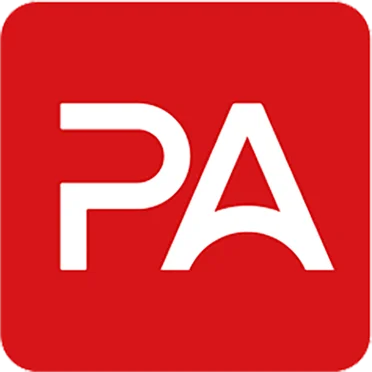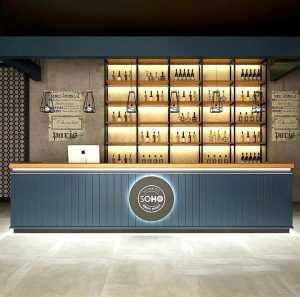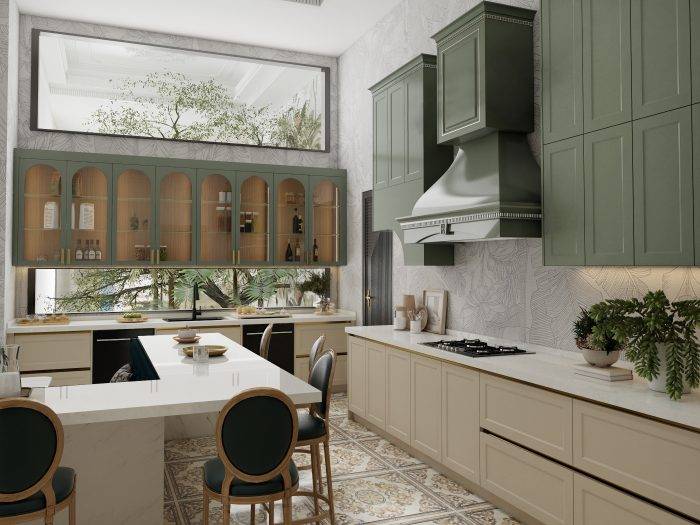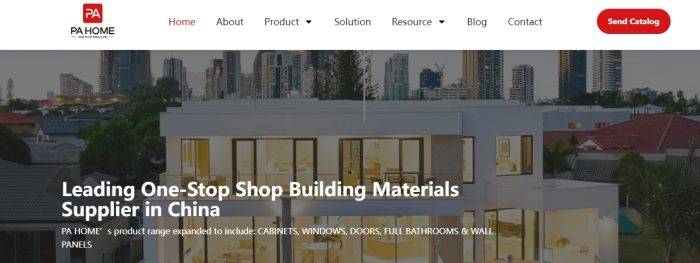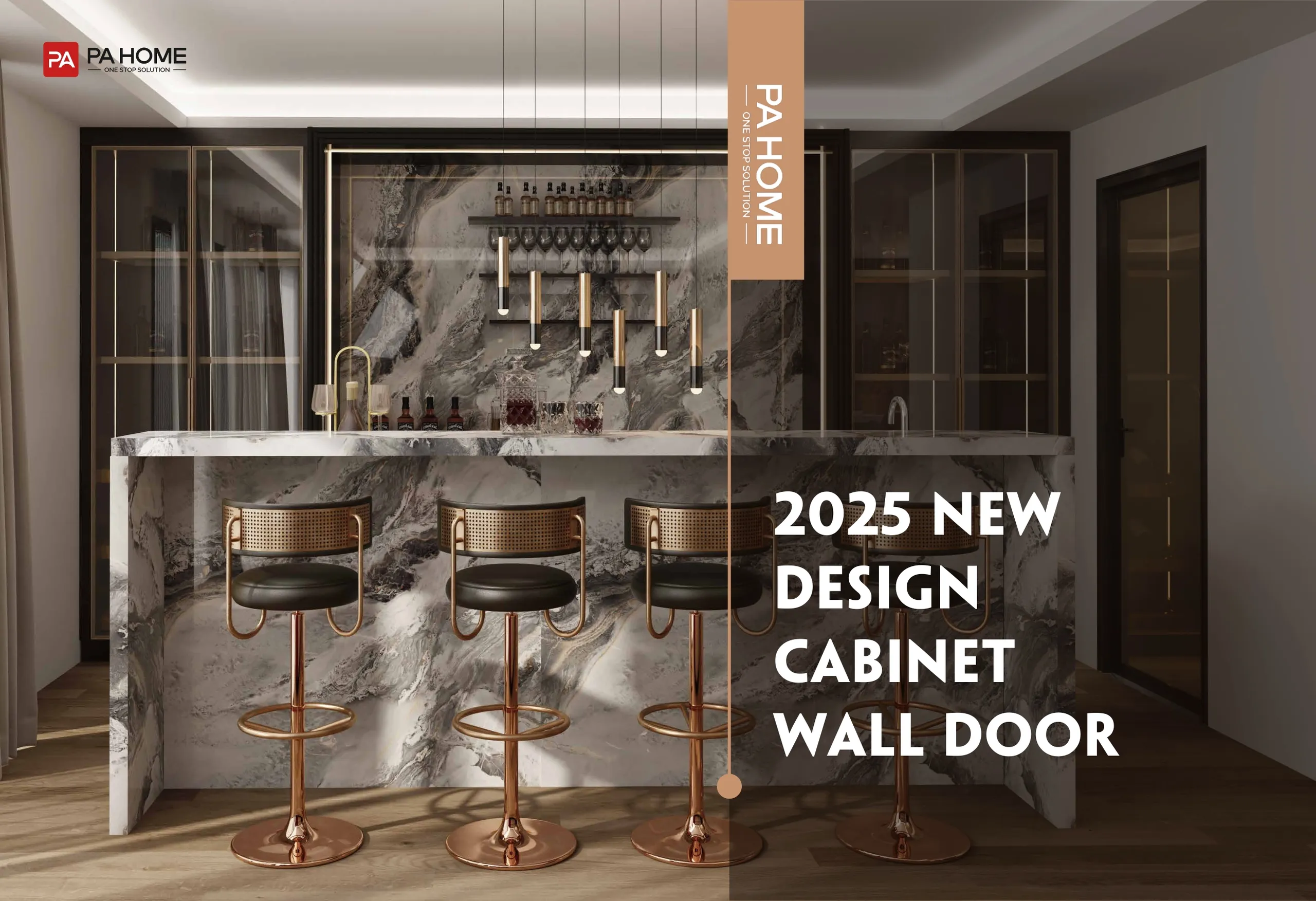As we move into 2025, the role of the kitchen in our homes is evolving. No longer just a place for cooking, the kitchen is now the heart of the home, where family and friends gather. Kitchen cabinets, more than any other feature, define the look and functionality of your kitchen. With over 17 years of experience, PA Kitchen, a leading kitchen cabinet supplier, has seen firsthand the evolution of kitchen trends and knows how to provide solutions for all types of projects, from residential to commercial. Below are key factors you need to consider when selecting the right kitchen cabinets for your kitchen remodel or new kitchen.
1. Start with Your Kitchen Layout
Before diving into design and materials, the layout of your kitchen must be your first consideration. The kitchen layout determines how efficient and comfortable your kitchen will be to work in.
A. U-Shaped Kitchen
The U-shaped layout is often regarded as the most efficient. It features three walls of cabinetry, allowing for a clear separation between washing, chopping, and cooking areas. This layout is ideal for maximizing countertop space and creating an ergonomic cooking workflow.
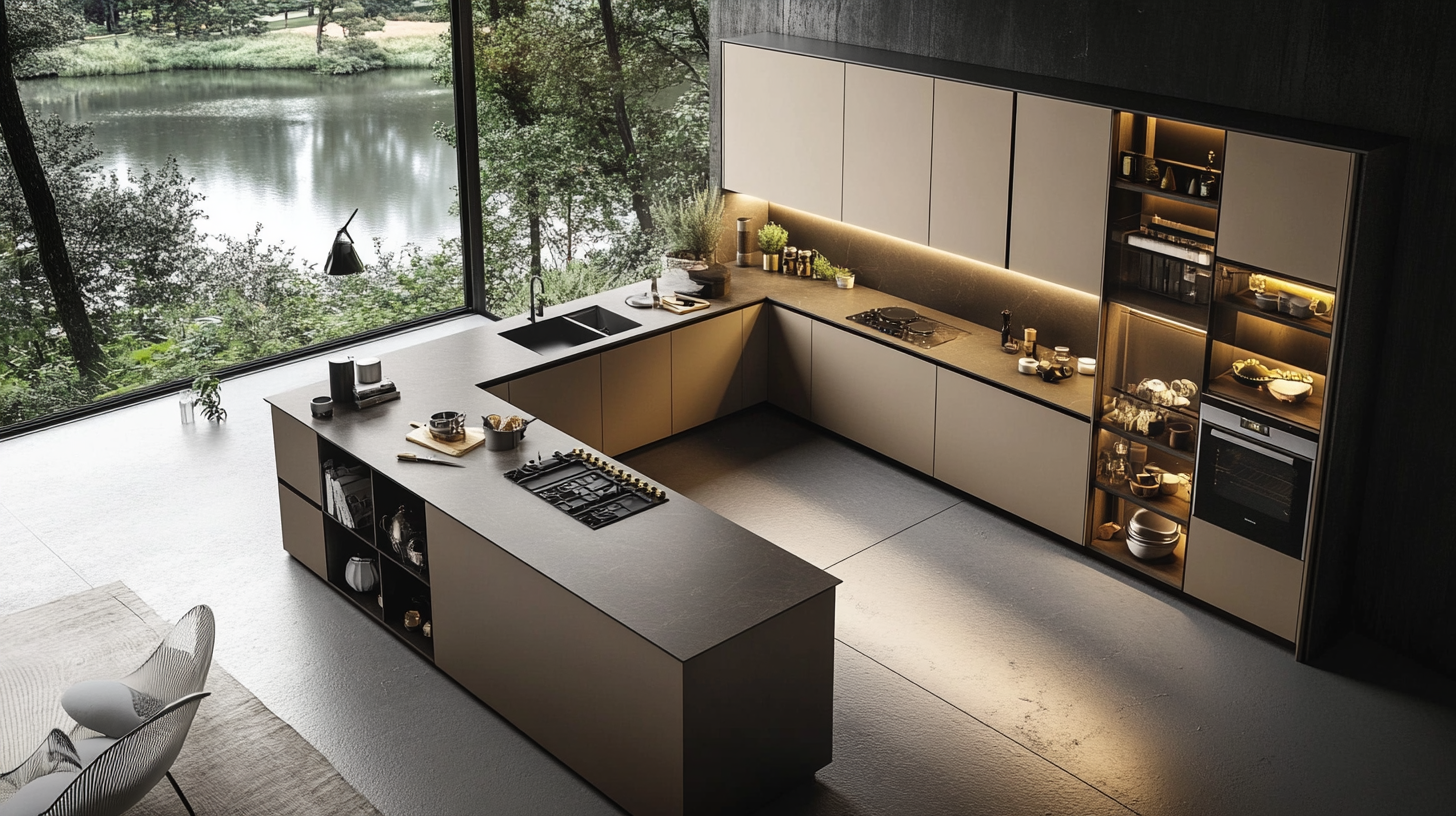
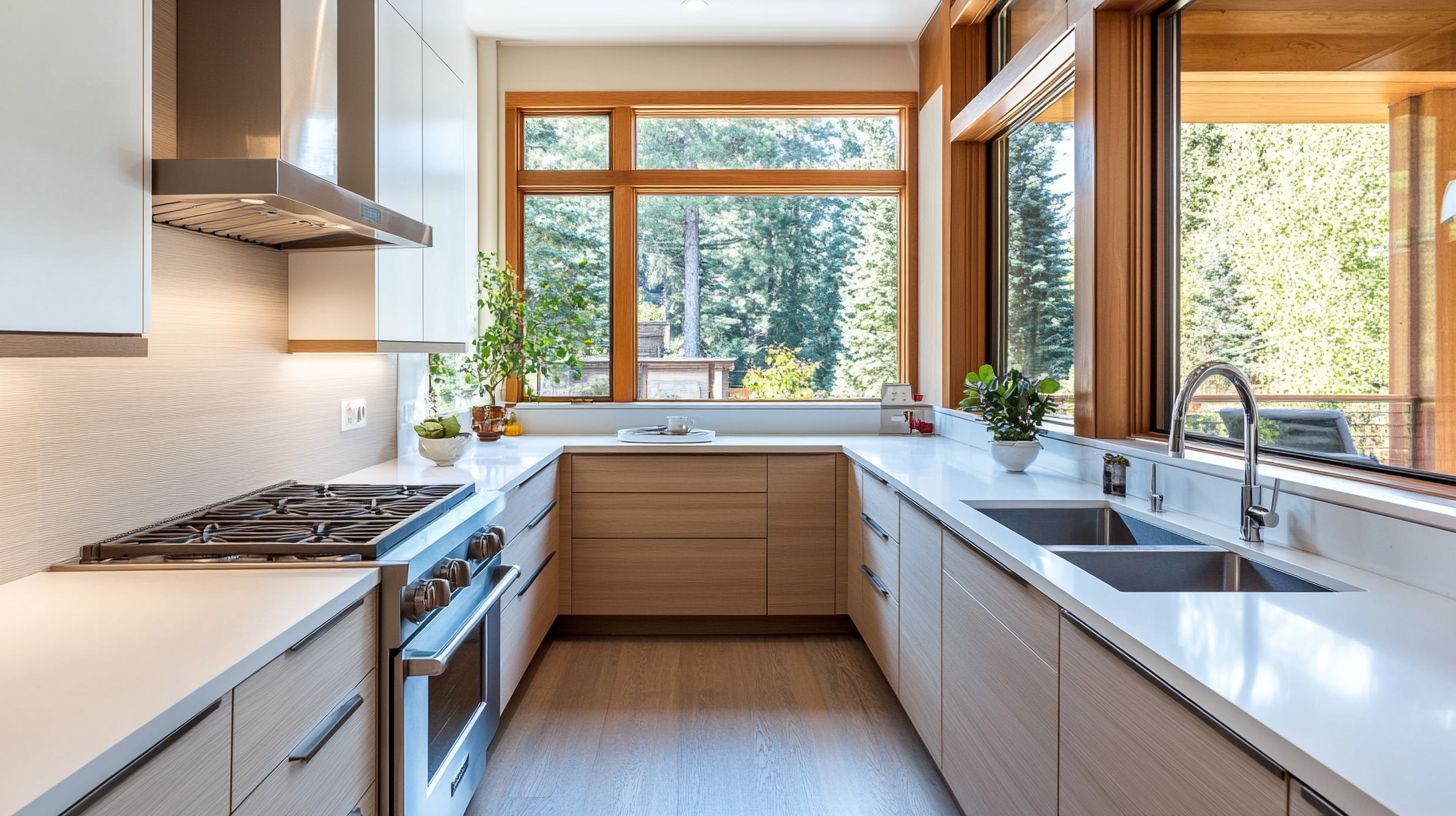
B. L-Shaped Kitchen
For smaller spaces, the L-shaped kitchen is a popular choice. It uses two adjoining walls, creating an open feel while keeping everything within reach. Perfect for kitchens with limited square footage.
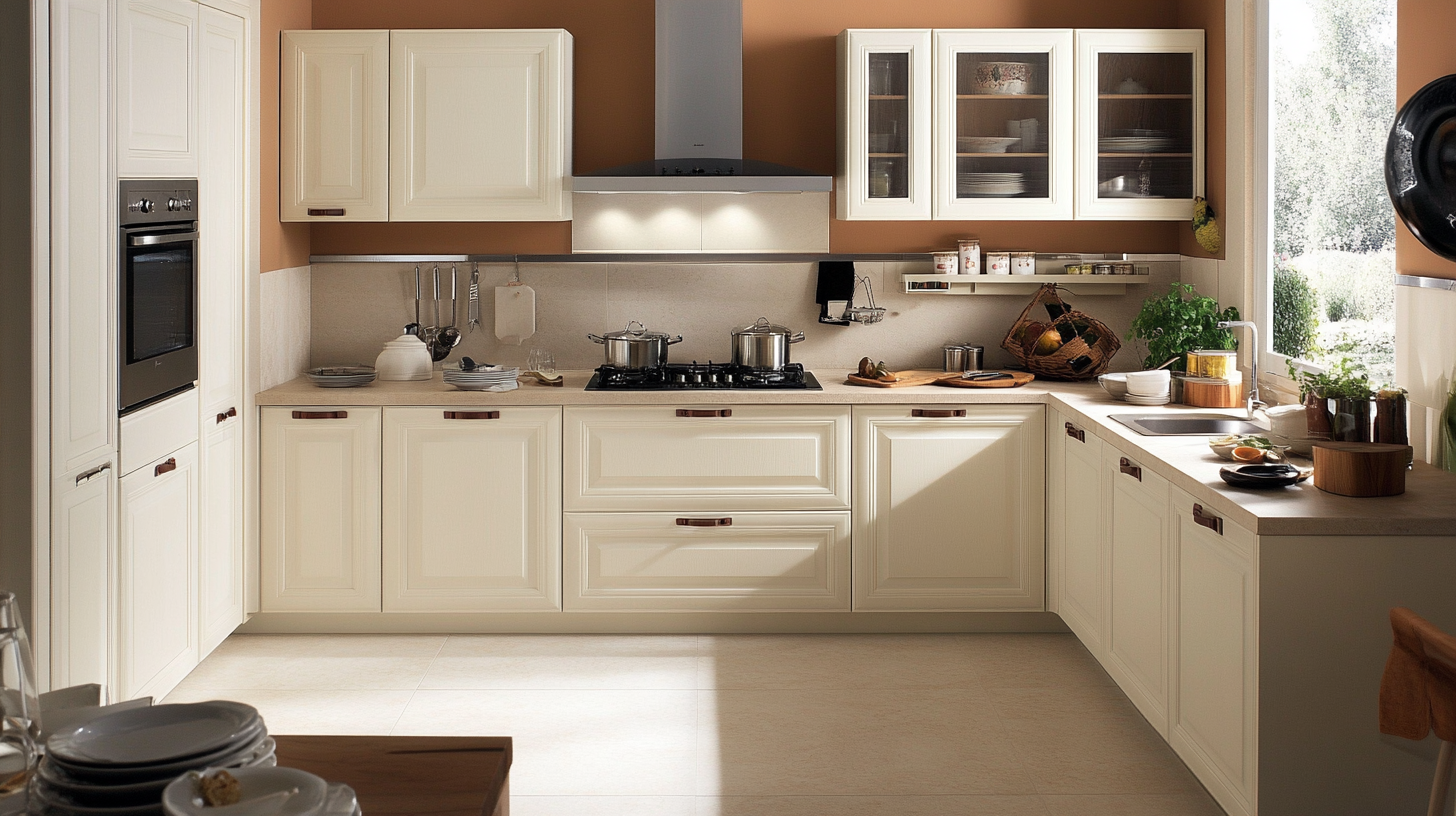
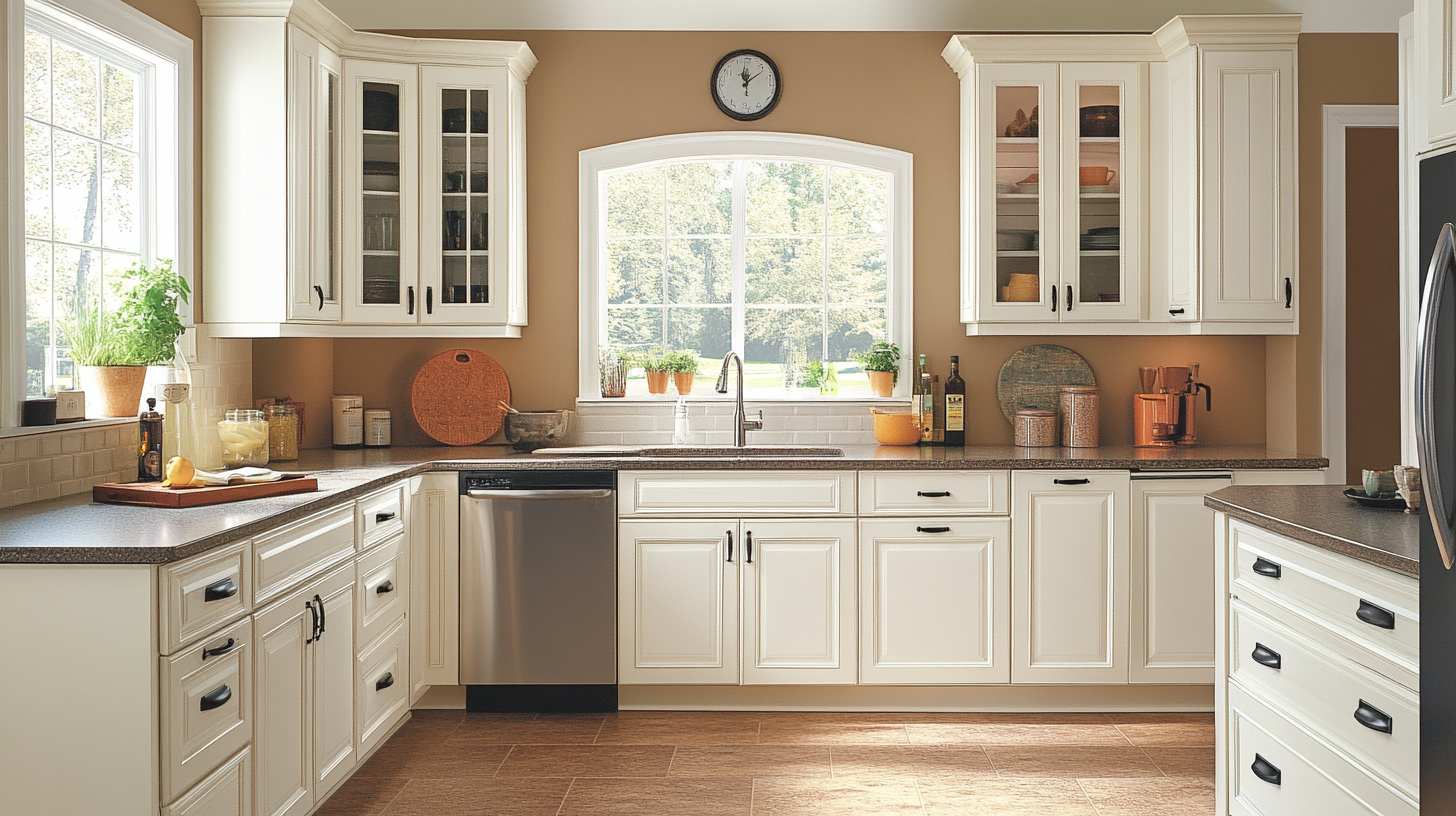
C. Galley Kitchen
This layout, common in European homes, works well in longer, narrow spaces. The kitchen is separated into zones, with cabinets placed on either side. It’s a great solution for large or narrow kitchens, offering plenty of storage and efficiency.
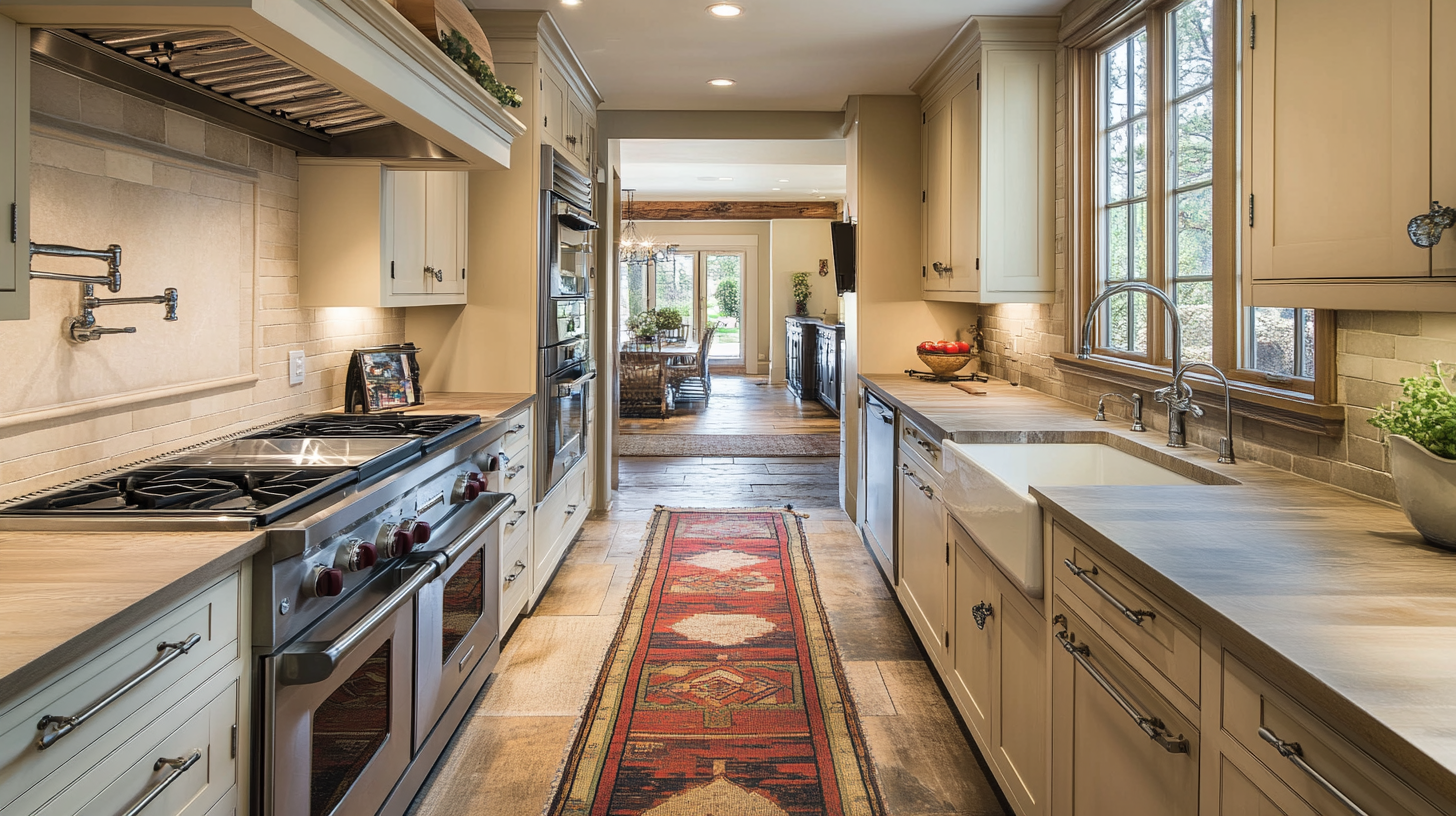
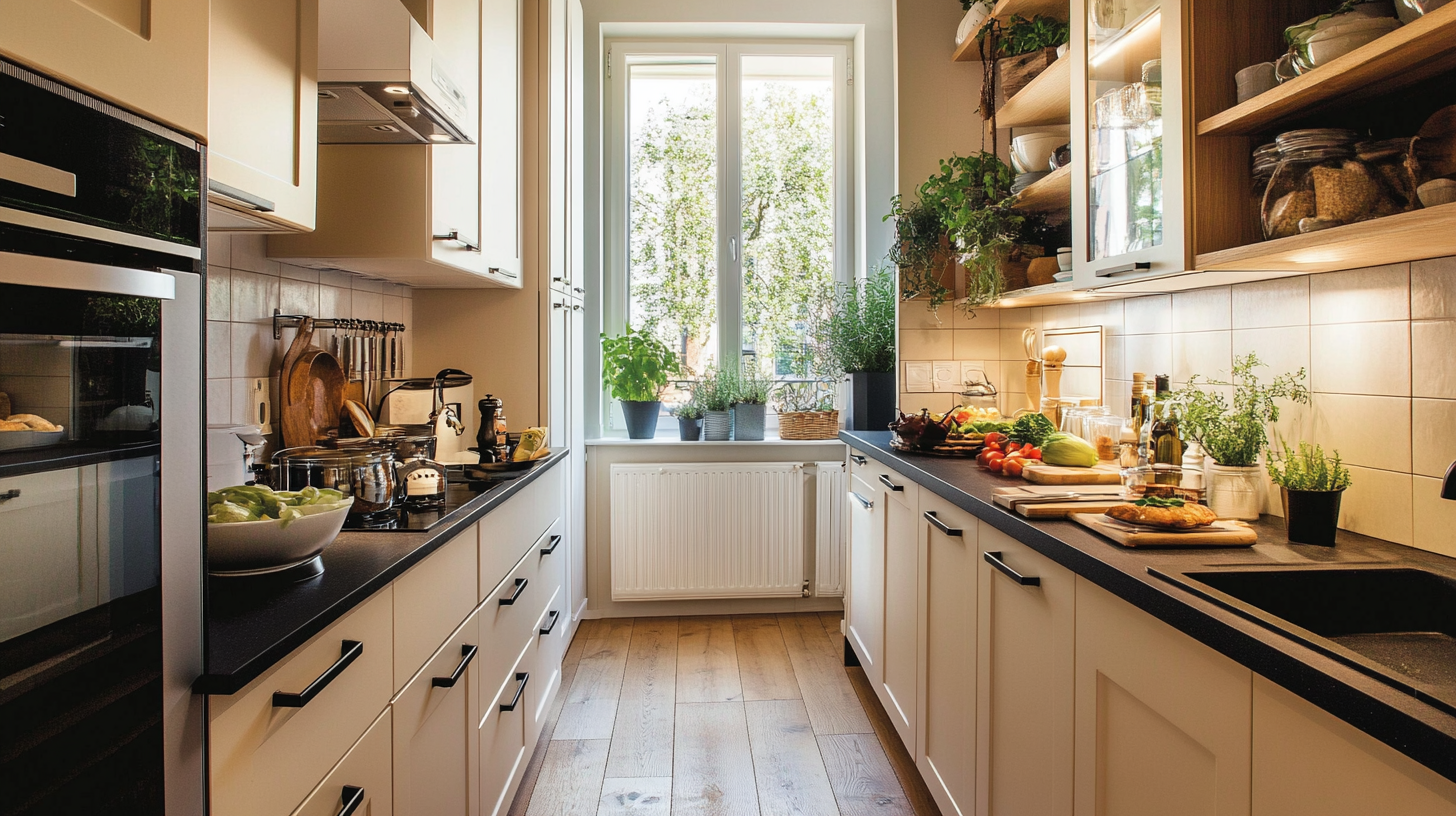
D. Open-Plan Kitchen
Open-plan kitchens continue to be a favorite, especially in modern homes. These kitchens open up to living or dining areas, making them ideal for entertaining. However, they require attention to ventilation to avoid grease and odors spreading throughout the space.
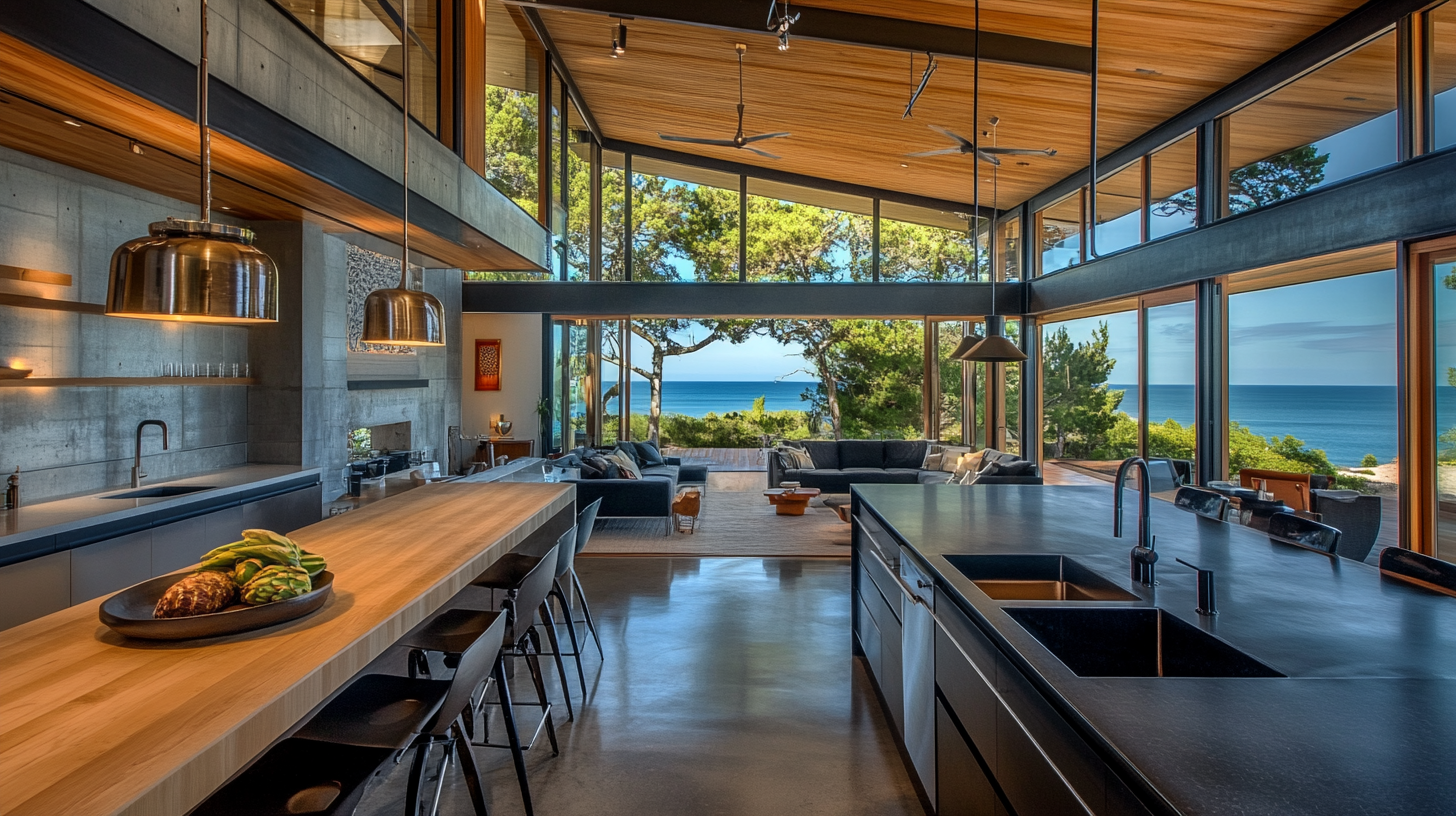

2. Maximize Kitchen Storage
Storage is one of the most critical features of a kitchen, and kitchen cabinets play a huge role in this. Whether it’s small appliances, pots, or dry goods, your kitchen cabinets should be able to organize your space effectively.
A. Hanging Storage
Hanging racks or bars are ideal for storing frequently used items like spoons, pots, and pans. Not only does this keep things organized, but it also allows for quick access.
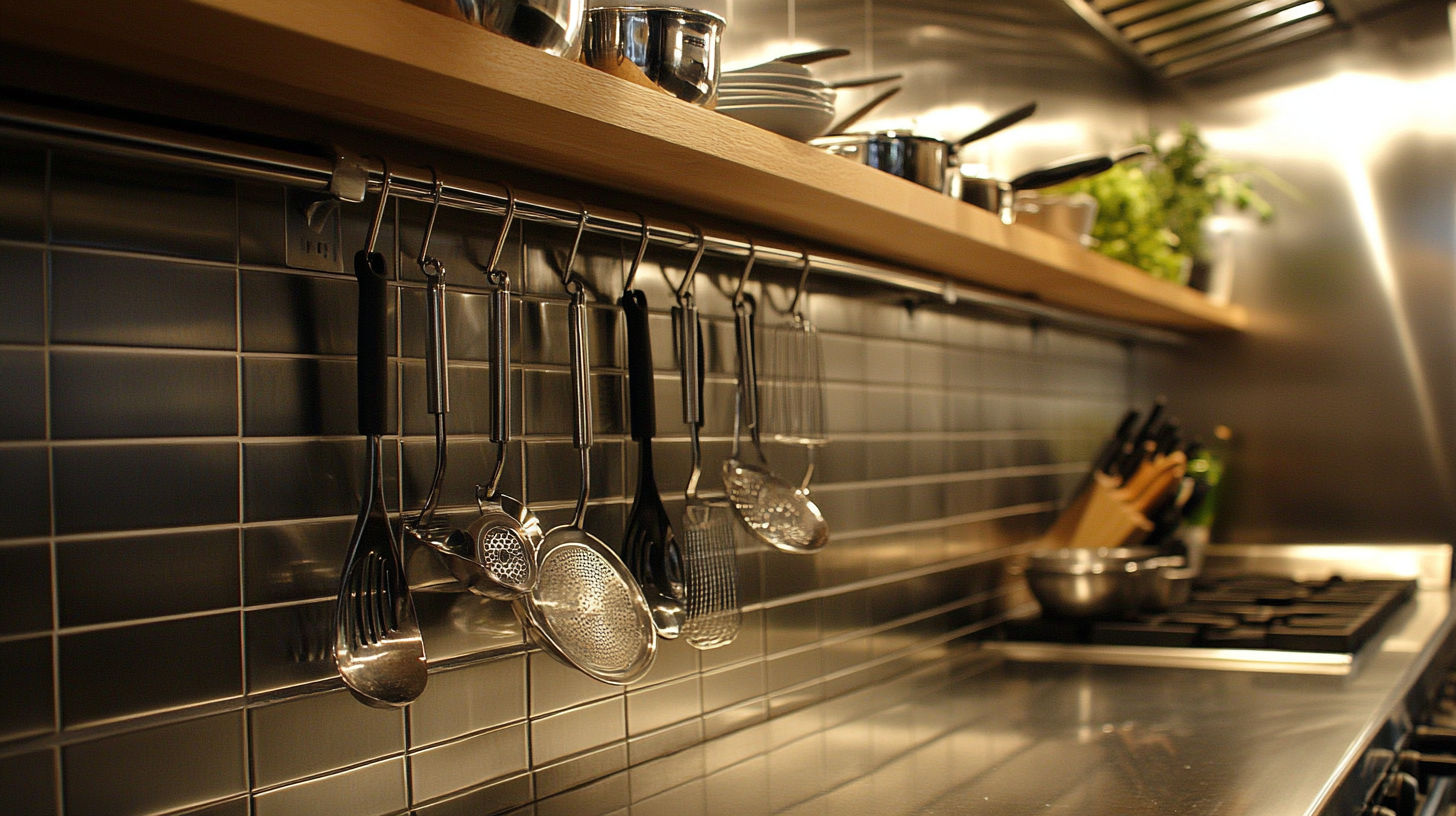
B. Shelving
Open shelves or partitioned shelves offer a practical storage solution for dry foods, utensils, and other frequently used items. Shelving systems help you store items in an organized manner, making it easier to locate them when needed.
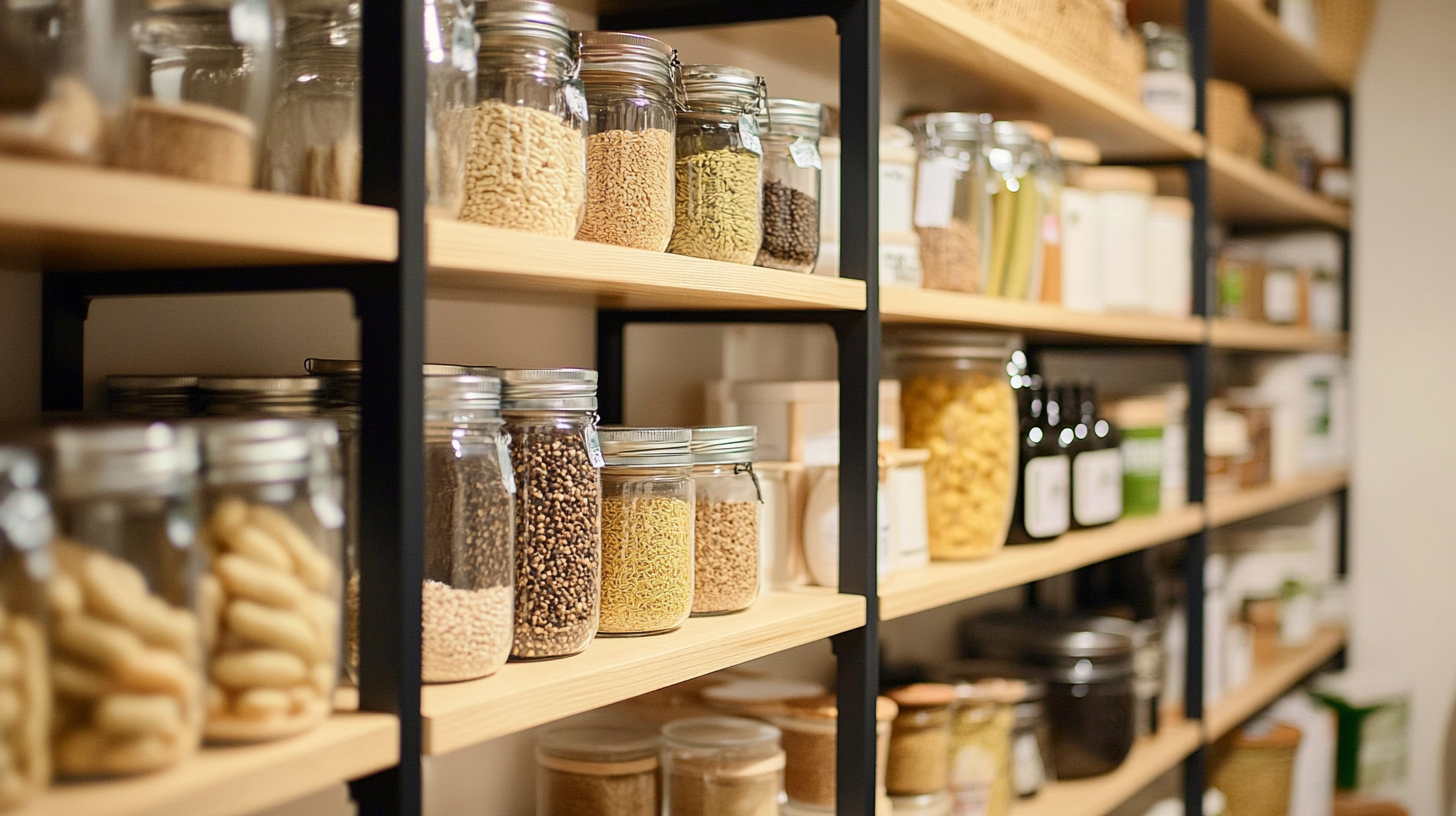
C. Cabinet Storage
Using pull-out baskets, drawers, and dividers within your cabinets are perfect for organizing smaller kitchen tools. The more organized your cabinets, the more efficient your kitchen will be.
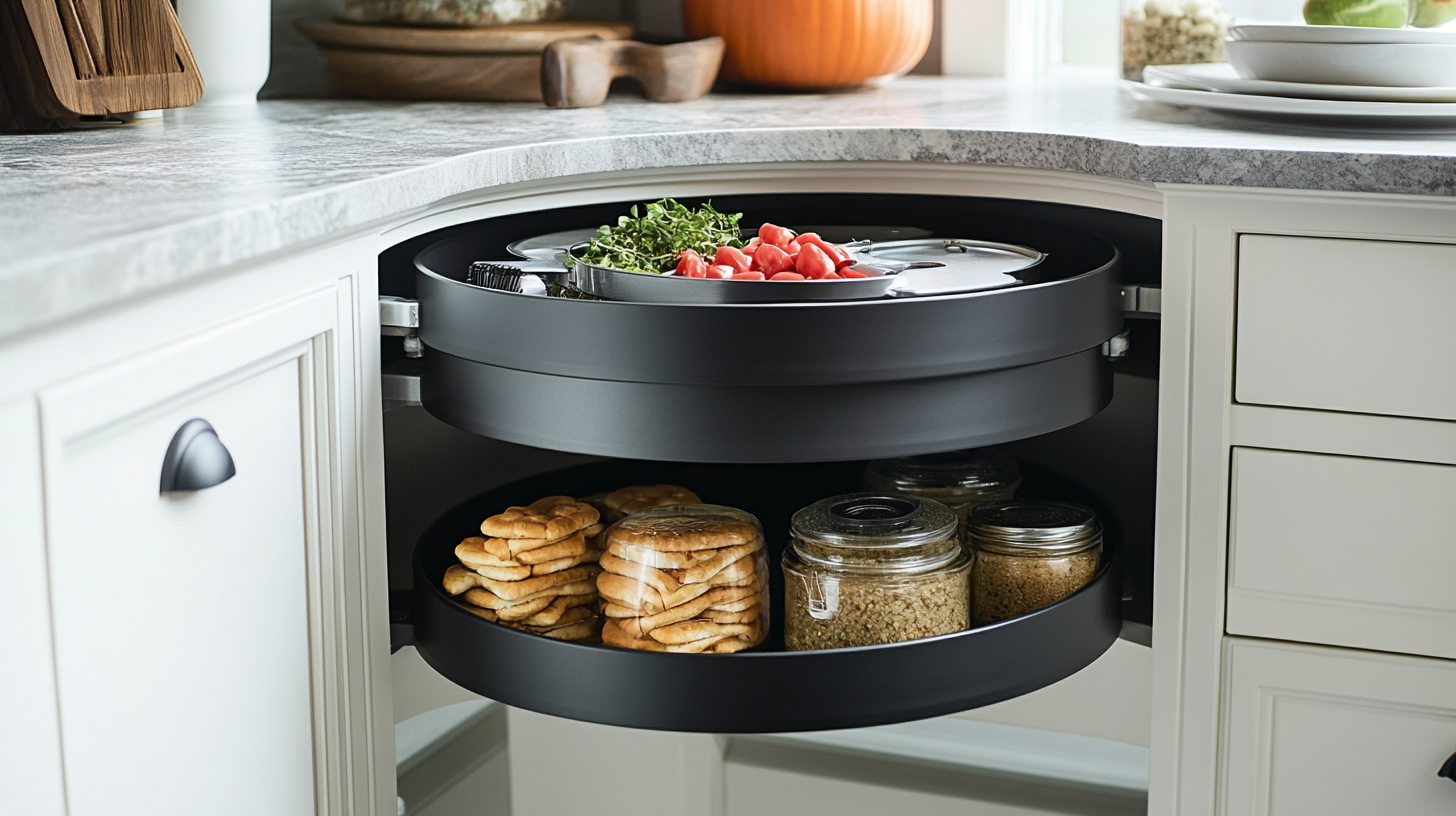
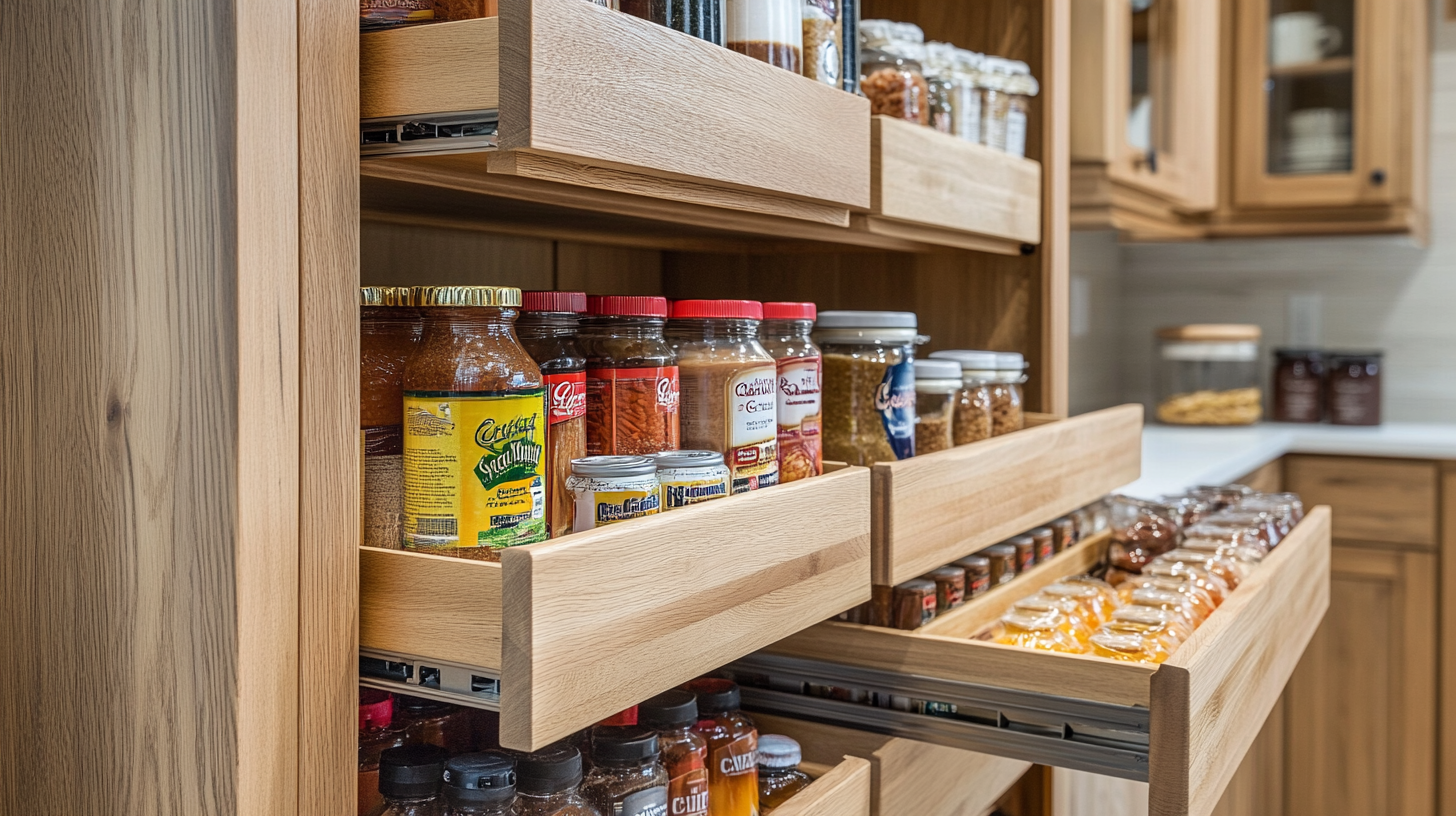
3. Choosing the Right Cabinet Color & Style
Your cabinets should complement the overall aesthetic of your kitchen. Choosing the right cabinet color and style will set the tone for the entire room.
- Neutral Colors: Shades like white, gray, and beige are timeless and versatile.
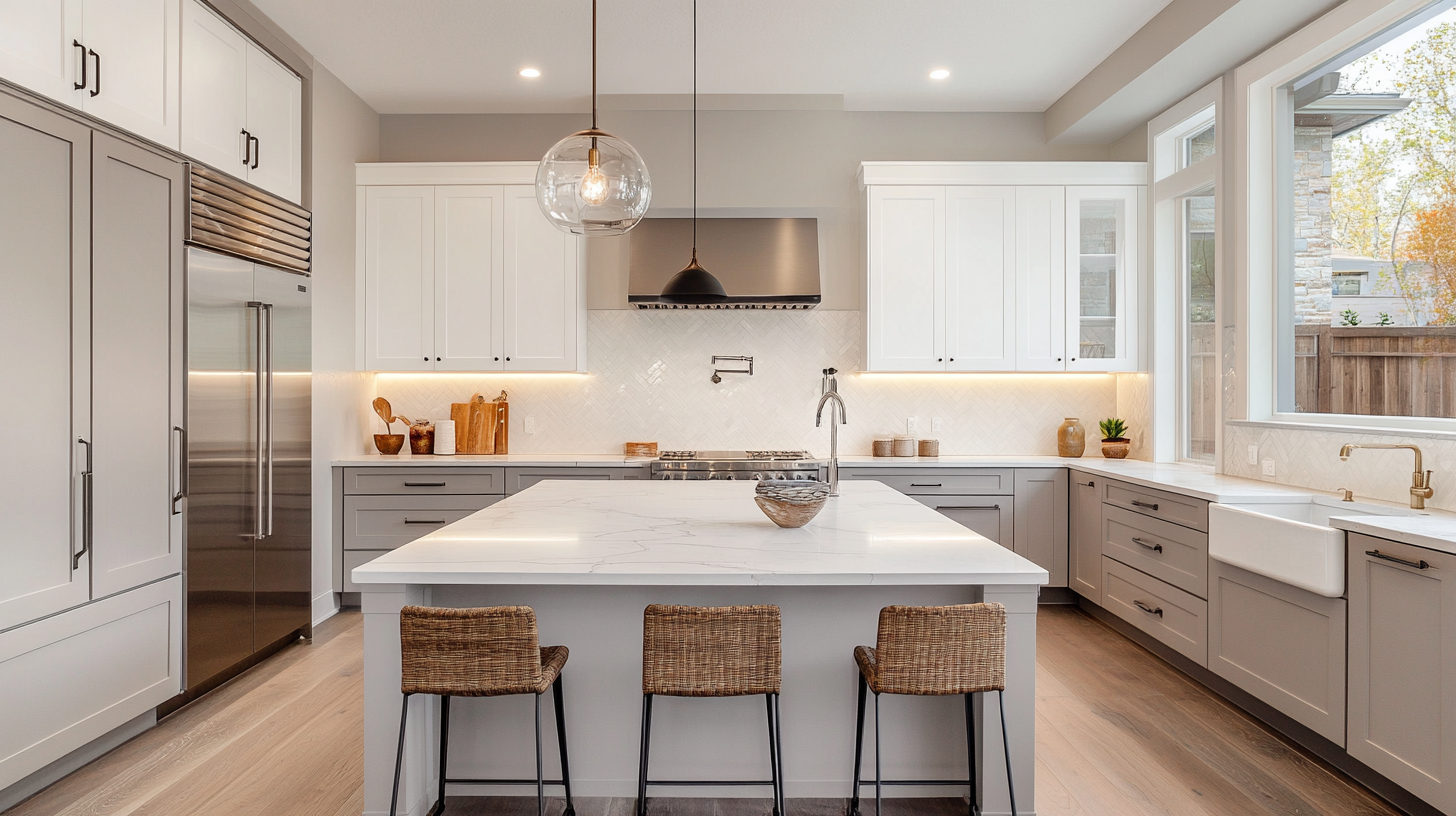
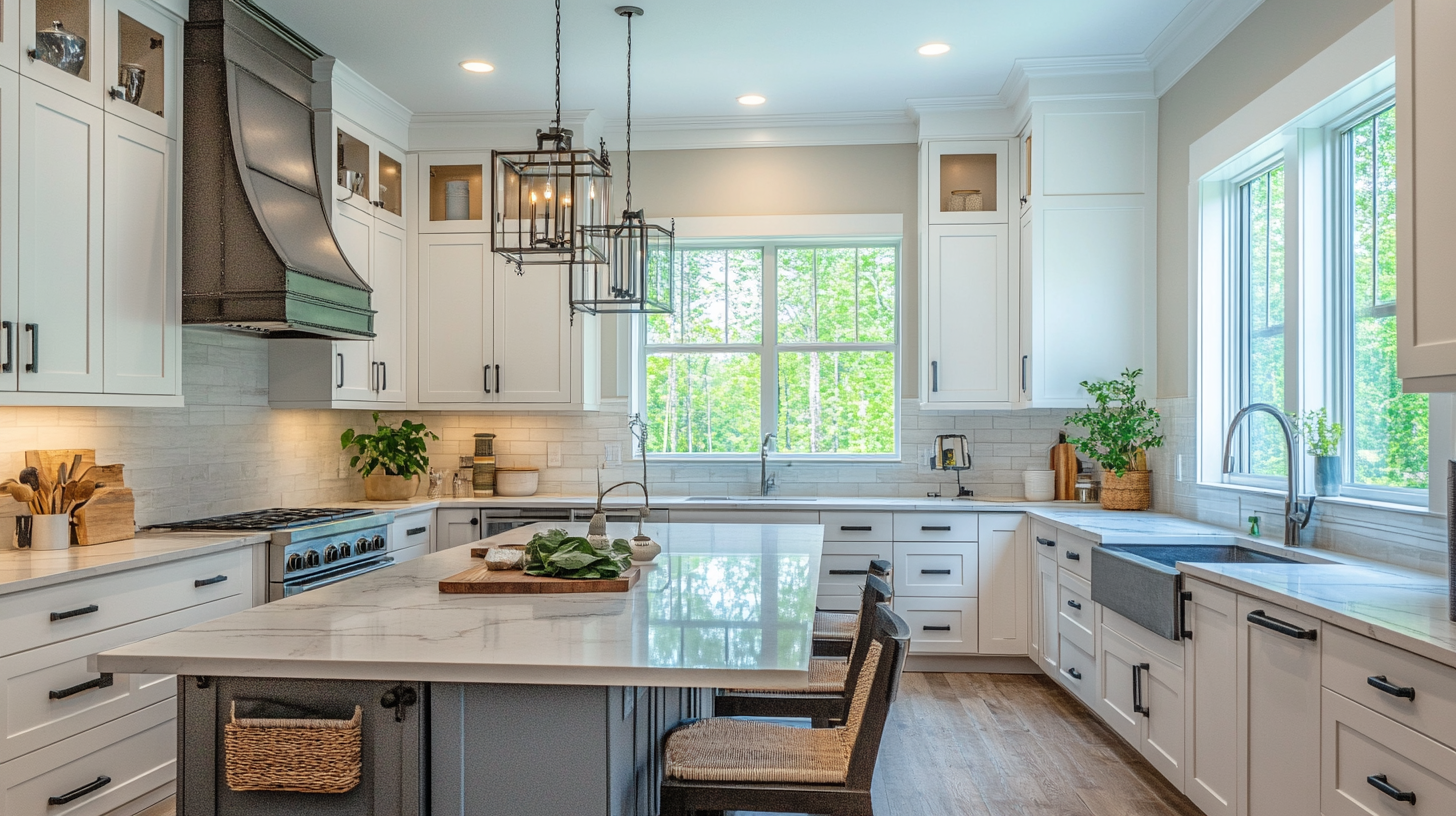
- Bold Colors: If you want to make a statement, colors like navy, green, or even black can add personality and flair to your kitchen.

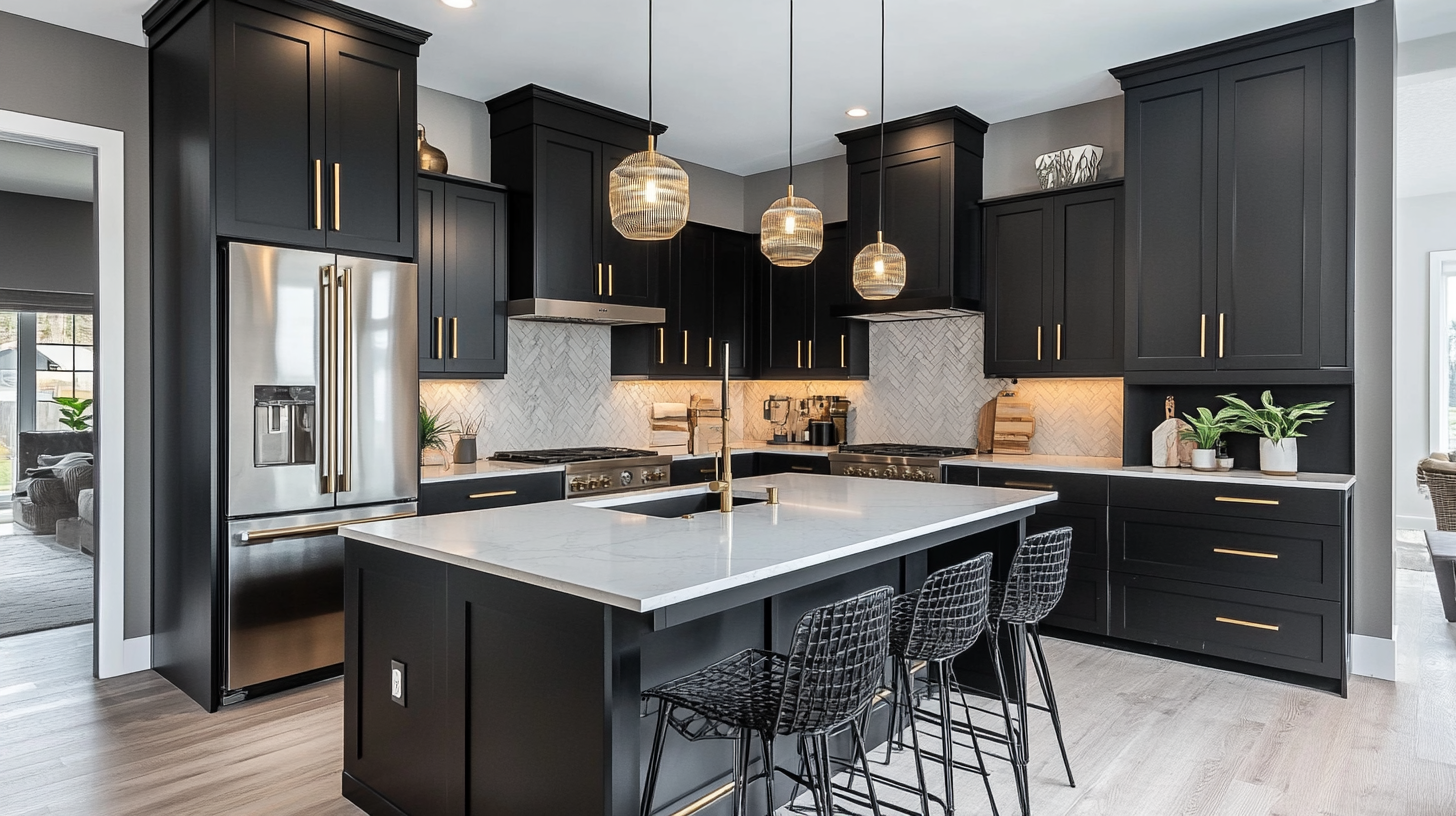
- Wood Finishes: Natural wood tones are making a comeback in 2025. They add warmth and texture to the space, especially when paired with matte or brushed finishes.
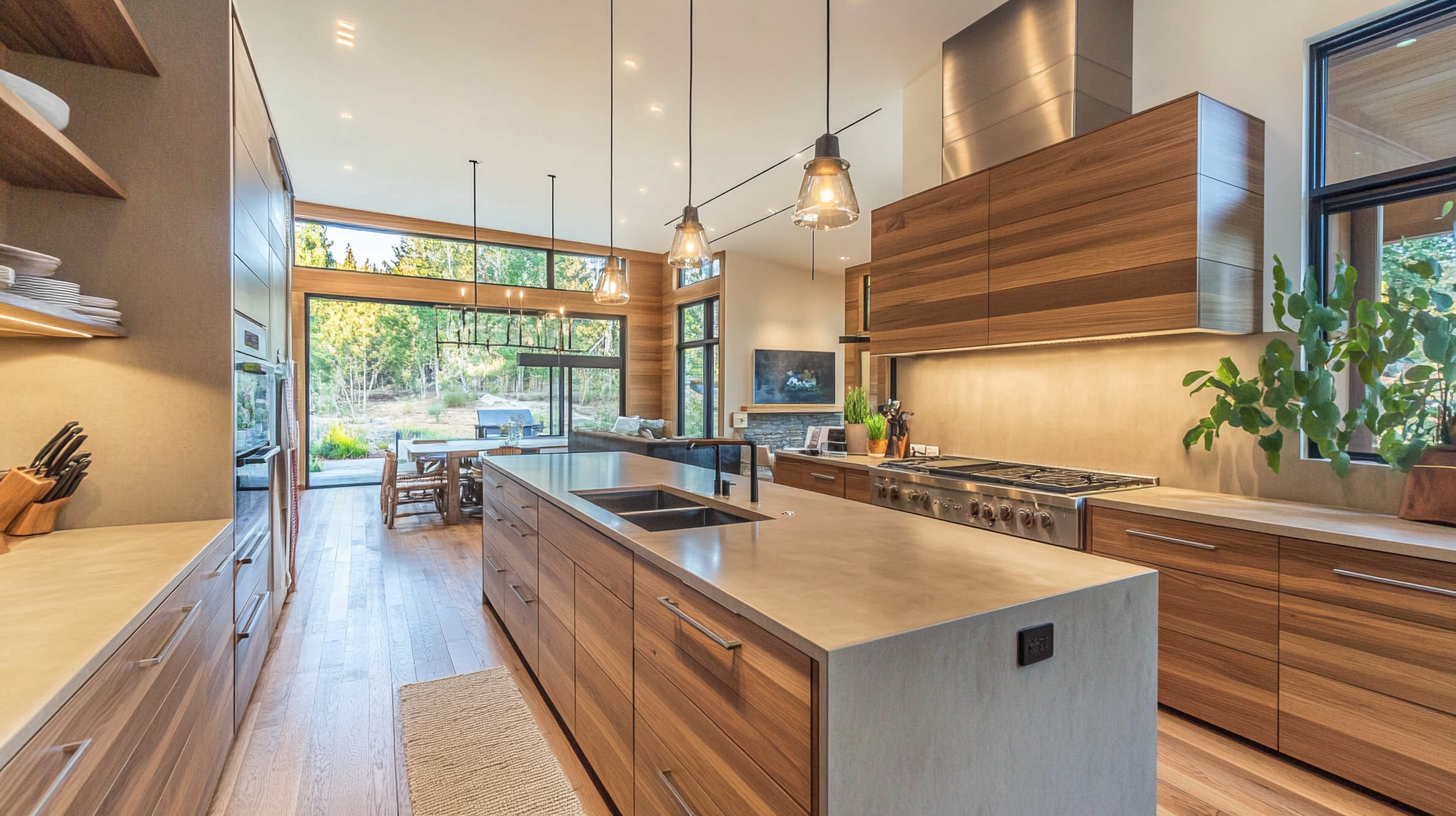
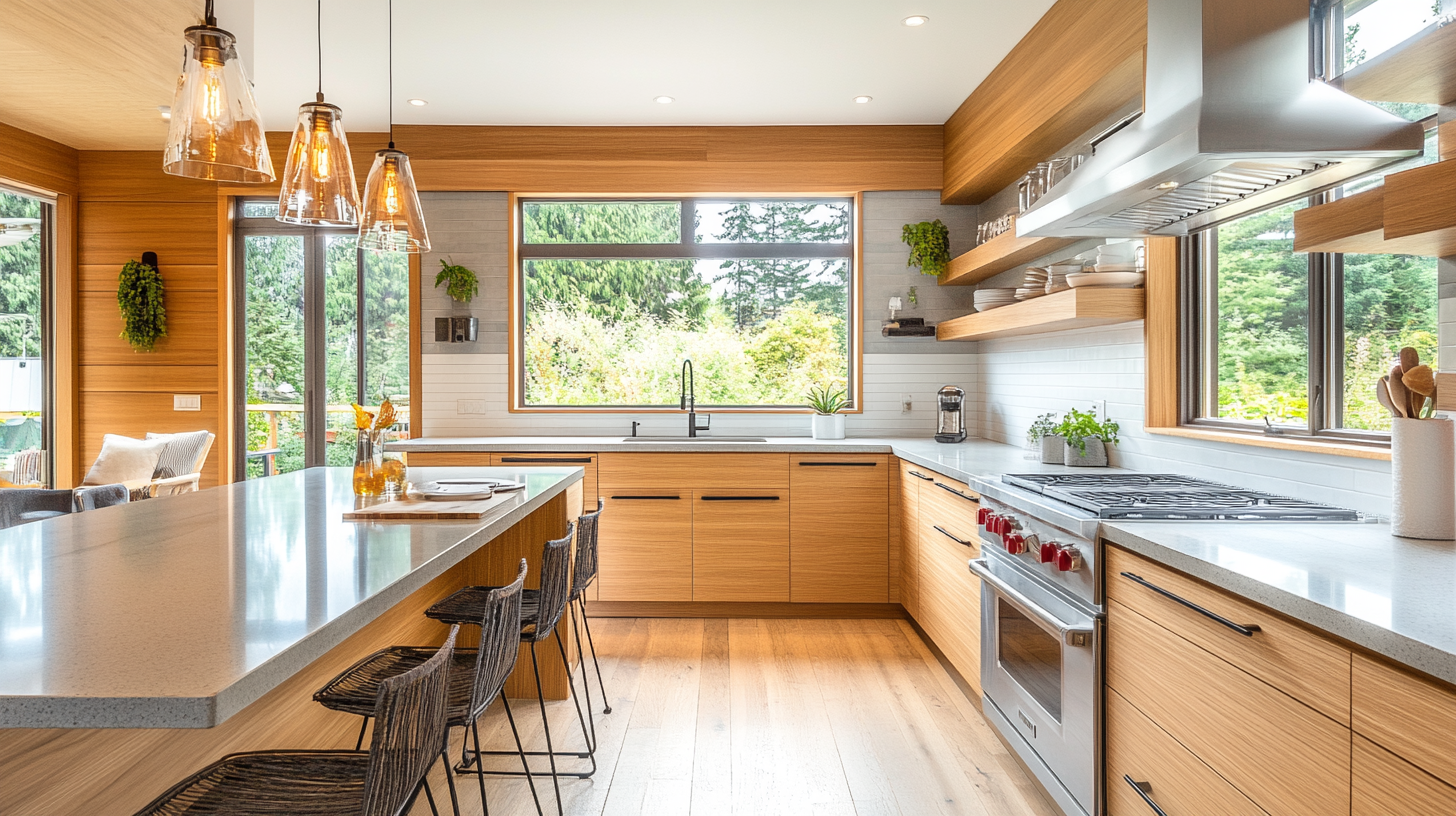
Neutral Colors (such as white, gray, and beige) are timeless and versatile. They provide a clean, understated look that can complement various kitchen styles and can easily be paired with different accent colors or textures.
Bold Colors like navy, green, or black should always be avoided in kitchen cabinetry because they may make the space feel smaller or too dramatic. This viewpoint overlooks how bold colors can actually add personality and flair to the kitchen when used correctly, creating a unique and modern design.
4. Budgeting for Your Kitchen Cabinets
Before committing to materials and styles, it’s important to establish a realistic budget. Kitchen cabinets typically account for a large portion of your renovation costs, so understanding how much you’re willing to spend is crucial.
Material Costs
Depending on whether you choose high-end hardwood, plywood, or budget-friendly options like MDF or particleboard, costs can vary significantly.
Installation and Labor
Installation is often a major cost factor, so consider professional help or look into ready-to-assemble (RTA) options for a more affordable alternative.
Additional Costs
Don’t forget accessories like handles, pulls, and custom inserts. These small details can add up but significantly enhance the functionality and aesthetic of your cabinets.
5. The Versatility of Kitchen Islands
In 2025, kitchen islands are more than just additional counter space. They’re multifunctional hubs that serve as a space for casual dining, food prep, and storage.
- Seating and Dining: Islands can double as dining spaces, providing extra seating for family and guests.
- Storage Solutions: Consider incorporating drawers or pull-out storage racks into the island to maximize its functionality.
- Appliance Integration: Think about integrating appliances like a microwave, sink, or wine cooler into your island for a more streamlined design.
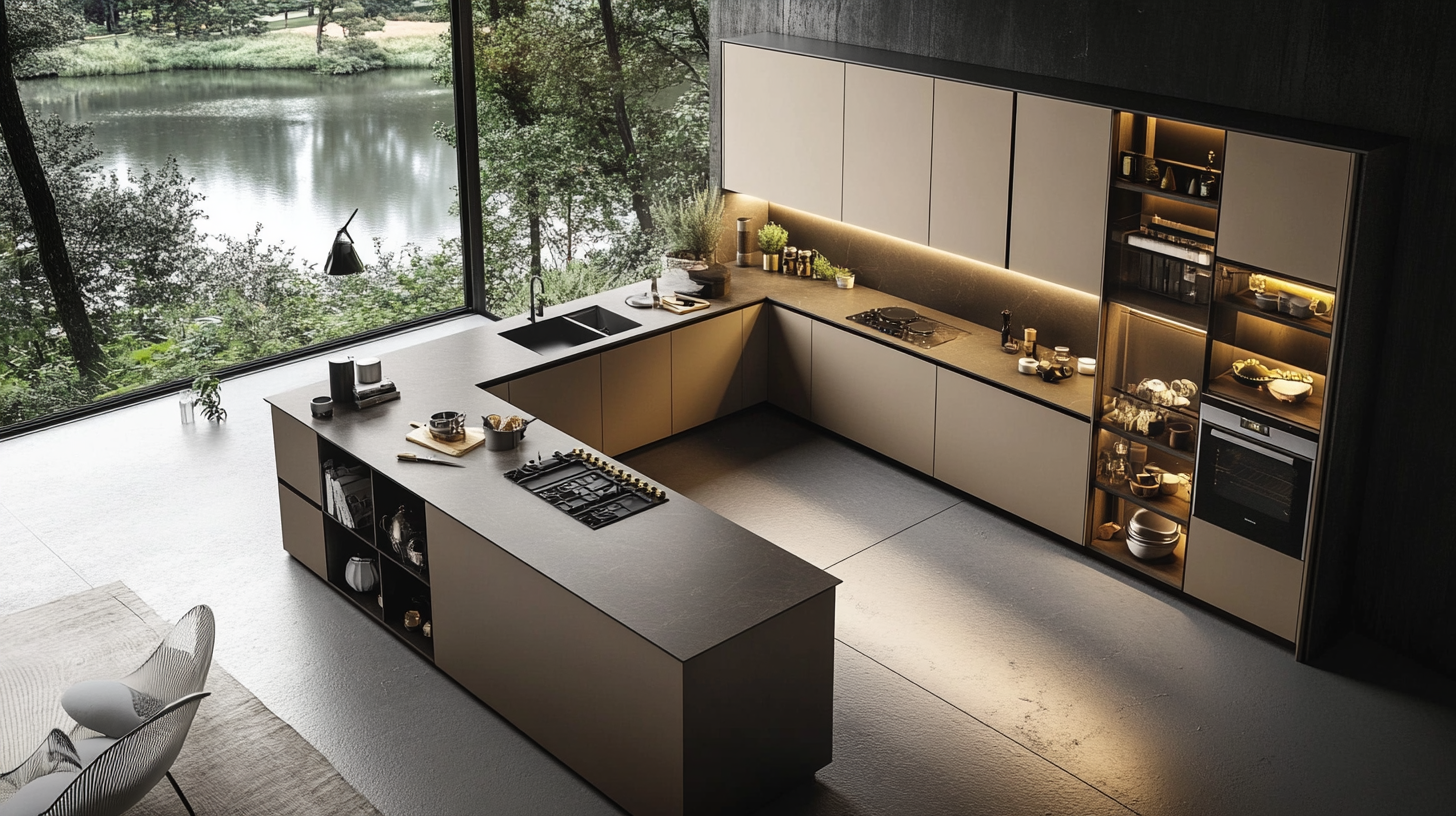
6. Kitchen Cabinet Types: Framed vs. Frameless
Understanding the different styles of kitchen cabinets will help you choose the right fit for your home.
A. Framed Cabinets (Traditional Style)
Framed cabinets feature a sturdy wooden frame around the edges of the doors and drawers. This traditional style is often used in homes with a classic design and can be customized for a timeless look.
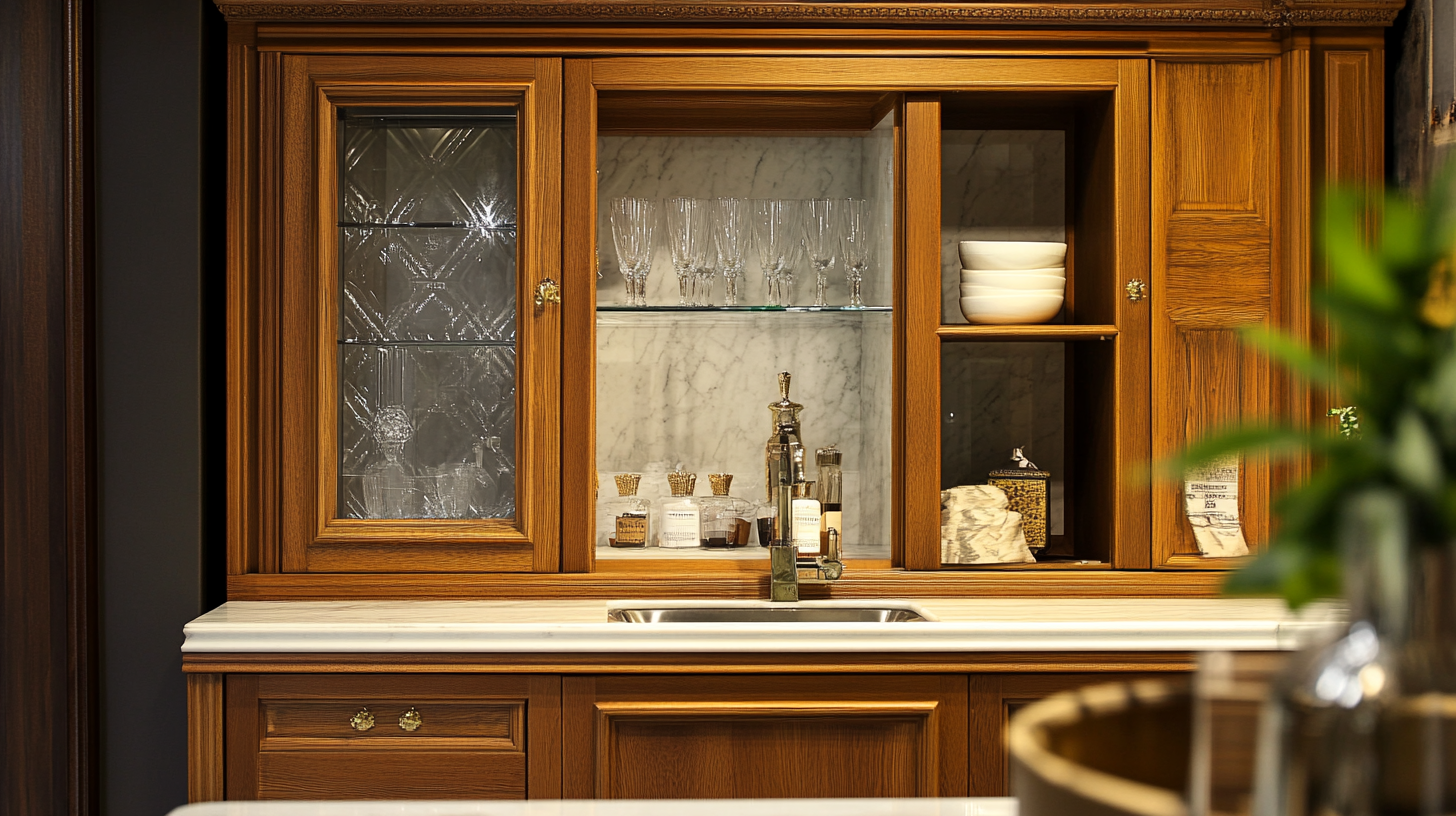
B. Frameless Cabinets (Modern Design)
Frameless cabinets offer a sleek, minimalist appearance and maximize internal storage space. These cabinets are perfect for modern kitchens, providing a clean, seamless design that complements contemporary homes.

7. Choosing Materials for Your Cabinets
When selecting kitchen cabinets, material choice is one of the most important decisions. Different materials offer varying degrees of durability, aesthetics, and cost.
- Hardwood: Oak, maple, and cherry are durable and visually appealing but come with a higher price tag.
- Plywood: A popular and affordable option, plywood is moisture-resistant and sturdy.
- MDF (Medium Density Fiberboard): MDF is durable and resistant to temperature and moisture changes. It has a smooth finish that is ideal for painting or staining and is commonly used for custom cabinet doors.
Particleboard: Although it has a lower reputation, particleboard is cost-effective for budget-friendly projects. However, it lacks the durability of plywood or MDF.
Hardwood (e.g., oak, maple, cherry) is a durable and visually appealing choice that is ideal for high-end kitchens. It provides long-lasting beauty and strength, though it comes at a higher cost.
Plywood is often considered inferior to other materials because it lacks durability. This viewpoint overlooks plywood’s moisture-resistant and sturdy qualities, making it a practical choice for various cabinet applications, especially in humid areas.
8. Cabinet Size and Customization: Finding the Right Fit
Standard Sizes vs. Custom Sizes: Which Is Right for You?
Standard Sizes: The most common kitchen cabinets come in standard sizes, typically ranging from 12 to 36 inches wide, 30 to 42 inches high, and 12 to 24 inches deep. These are mass-produced and can be a cost-effective option for budget-conscious homeowners. However, they may not always fit your space perfectly, especially in uniquely shaped kitchens with irregular wall angles, corners, or architectural features.
Custom Sizes: If you have a specific vision for your kitchen, custom cabinets may be the right choice. Custom cabinetry allows you to tailor the size of each piece to suit your kitchen’s exact measurements. This means no wasted space, more efficient storage solutions, and a seamless, cohesive look. Custom cabinets also offer the flexibility to choose from various finishes, materials, and configurations that standard cabinets cannot provide.
9. Cabinet Installation Considerations
When installing cabinets, consider:
- Size and Area: Larger kitchens require more materials and labor, which increases costs.
- Material Handling: Hardwood cabinets are heavier and harder to install, while plywood is lighter and easier to manage.
RTA vs. Custom: Ready-to-assemble (RTA) cabinets are an affordable and quick option, but custom cabinets are tailored to your exact specifications.
Need Expert Support on Your Kitchen Project?
PA Home is one of China’s top 10 cabinet manufacturers, with over 42,000 completed projects across 80+ countries. With over 17 years of export experience and two advanced factories in China and Indonesia, we offer full-house custom solutions including cabinets, doors, windows, wall panels, and more.
✅ Fast production timelines
✅ Affordable pricing for bulk and custom orders
✅ Full support for homeowners, contractors, and developers
Conclusion
Choosing the right kitchen cabinets for your home is a decision that requires careful thought. Whether you’re remodeling or starting from scratch, focus on functionality, design, and value to create a space that works for you. And when you’re ready to take the next step, PA Kitchen is here to help guide you through the process.
FAQs
In 2025, frameless cabinets with clean lines and minimalist finishes continue to dominate. Shaker-style doors and matte wood tones are also trending for their balance of modern and timeless appeal.
Kitchen cabinets typically account for 50–70% of your kitchen renovation budget. Expect to spend between $3,000–$20,000 depending on materials, customization, and installation.
Yes, if you want optimal fit, functionality, and design flexibility. Custom cabinets are especially ideal for irregular spaces, personalized layouts, and premium finishes that suit your style.
